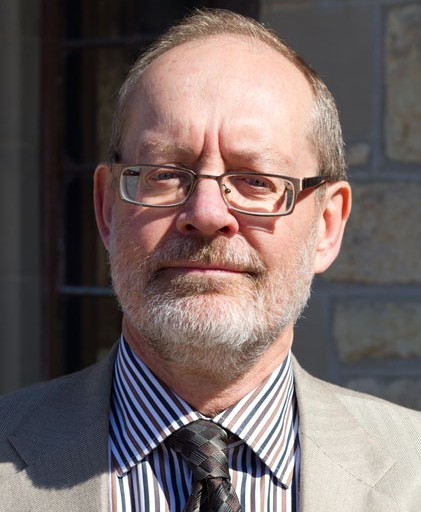A vision for student enrolment
Since October, a university committee has been working to develop a new Strategic Enrolment Management (SEM) plan that will guide the long-term vision for undergraduate and graduate student enrolment—including numbers and composition—at the U of S.
By Colleen MacPherson "In reality, SEM is about fundamentally shifting the way we think about our enrolment," said David Hannah, associate vice-president of student affairs, adding that the SEM plan will shape the student body in a way that fits with the objectives of the third integrated plan. He explained SEM as a process "that integrates enrolment planning and enrolment strategies, and enables structures with an institution's long-term planning processes and strategic directions."
"In reality, SEM is about fundamentally shifting the way we think about our enrolment," said David Hannah, associate vice-president of student affairs, adding that the SEM plan will shape the student body in a way that fits with the objectives of the third integrated plan. He explained SEM as a process "that integrates enrolment planning and enrolment strategies, and enables structures with an institution's long-term planning processes and strategic directions."And once planning got underway, said Hannah, it became apparent that the timing of the project was perfect. "Each college, in preparing for the third integrated plan, laid out its enrolment goals to 2016, but did so in isolation of the other colleges. When you add all the colleges' enrolment goals together, it actually resulted in a slight decrease in overall university enrolment," he explained. "It seems that when you know that, it is a perfect time to engage in an institution-wide conversation about what the long-term enrolment goals of the university should be."
To get everyone on the same page, the university used a competitive process to hire SEM Works, a consulting company with specific expertise in strategic enrolment management, to help develop a plan looking out to 2020 and beyond. "We wanted this to be a conversation that engages the colleges and the institution in determining our future enrolment," said Hannah. "This is not intended to be a top down process. The consultants won't be telling us what our enrolment goals should be; rather, they are leading us through a process that will enable us to collaboratively set goals at college and institutional levels."
The multi-year process will identify strategic opportunities for the university to explore, explained Hannah. "Through this project, we are learning the process and building capacity. It will also lead us to develop tactics that can be implemented, specific actions we can take to change our enrolment profile, rather than just being a document that sits on a shelf."
Those tactics are critical in addressing recruitment issues in Saskatchewan and determining what the enrolment profile will look like, he continued.
"Typically, there has been one primary pathway to our undergraduate programs: Grade 12 students from Saskatchewan. But those numbers are declining and will continue to for the next decade or so, so we need to diversify those pathways. We expect the enrolment profile to include more students from key recruitment groups such as Aboriginal students, out-of-province students, international students and mature students."
Lawrence Martz, dean of the College of Graduate Studies and Research, added that "while graduate student numbers have grown substantially over the past decade, they must continue to grow to support the expanding research programs of our faculty and to strengthen our position as a prominent medical-doctoral university. Growth will need to become increasingly differentiated, with larger PhD numbers in our areas of research strength."
The desired profile of the student body will be as important as the enrolment number itself, explained Hannah. "SEM isn't just about numbers; it's also about composition—undergrads versus grads, Saskatchewan versus out-of-province, how many Aboriginal and international students. We know this matters because it provides students with a more diverse experience and better reflects the province's population."
Hannah is also clear that SEM goes beyond recruitment. "While many people think first about recruitment when discussing enrolment, the SEM perspective focuses on all factors that affect enrolment including admissions, financial aid, student supports, retention, class scheduling, degree completion, housing and other factors." SEM even extends to program offerings, he continued. "What attracts students in terms of academic programming? To what extent should we try to get students into our existing programs versus developing new programs that appeal to students?"
SEM presents a new reality for Canadian post-secondary institutions, Hannah said. "SEM grew up in the U.S. where there is a much higher level of competition and where tuition revenue makes up a bigger part of the operating budget. U.S. schools live and die based on enrolment because enrolment drives tuition and revenue. Although we are fortunate to receive proportionally more government funding in Canada, tuition is still crucial and becoming even more important.
"Up until a decade ago we never really had a problem with enrolment, but the trends we are facing now include a declining demographic of university-aged kids and increased competition for the best students, especially in the prairies and Atlantic Canada. As a result of all those things, we have to deal with enrolment in a more systematic and strategic way."
Hannah expects to have preliminary enrolment goals set by the summer and by fall, "we will turn our attention to identifying strategies and tactics to move towards those goals. I think the U of S has a better understanding of SEM than even five years ago and we are now ready to have this conversation."

